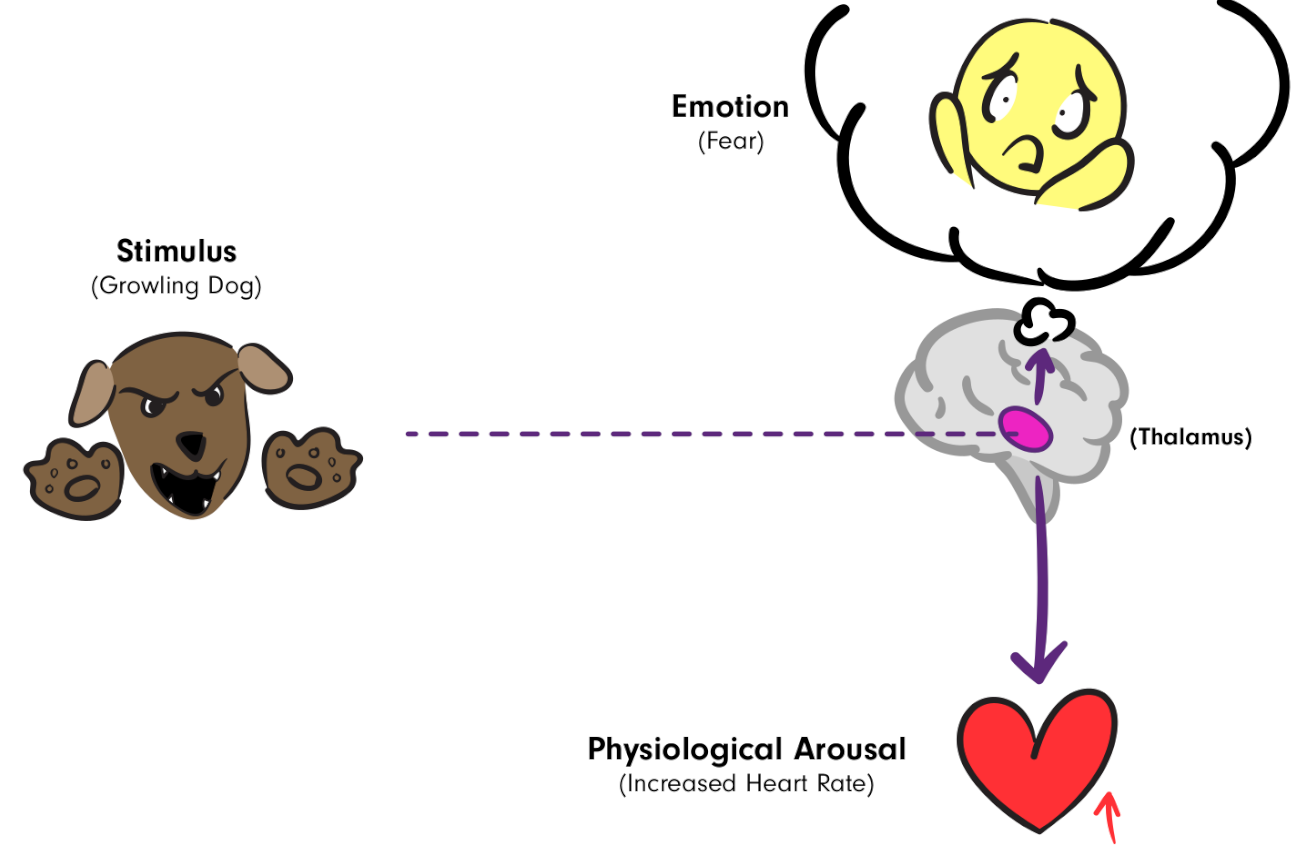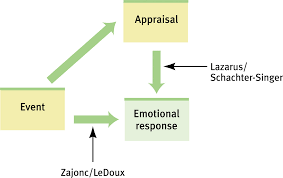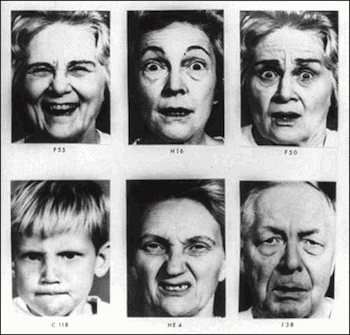Dalia Savy
Mary Valdez
John Mohl
AP Psychology 🧠
334 resourcesSee Units
Emotion is a response of the whole organism involving physiological arousal ❤️, expressive behaviors🚶, and conscious experience 🤔
Theories of Emotion
Just like with motivation, there are tons of different theories of emotion. What we know, in general, is that our emotions helped us survive as well. They help us stay focused at stressful times and keep us alert at cautious times🚨.
Common Sense Theory
First, there was the common sense theory that said first you feel the emotion, and then the physiological response. An example of this would be, "I'm scared so I tremble."
This was like the instinct theory in motivation; it didn't really stick and make sense to other psychologists, so they came up with their own theories after it.
💡Tl;dr—Emotion -> Physiological response
James-Lange Theory
This theory said that emotion is the result of a physiological response, which in turn activates the emotion, which is the opposite of the common sense theory.
An example of this is, "we feel sad because we cry, angry because we tense up, and afraid because we tremble.”

Image Courtesy of Pixorize.
💡Tl;dr—Physiological Response -> Emotion
Cannon-Bard Theory
With this theory, a stimulus activates the brain, which simultaneously triggers physiological responses and the subjective experience of emotion. Canon believed that the body's responses are too similar to be two separate things.
An example of this is, "my heart begins pounding as I feel fear.”

Image Courtesy of Pixorize.
💡Tl;dr—Physiological Response + Emotion
Schachter-Singer Theory
The Schachter-Singer Theory, or Schachter 2 Factor Theory, brings cognition into emotion. When one senses physiological arousal, one does a cognitive appraisal by scanning their environment in order to determine the emotion that one is feeling.
An example of this is, "I am trembling because of the snake in the room. Therefore, I must be afraid."

Image Courtesy of Pixorize.
💡Tl;dr—Physiological Response + Thoughts = Emotion
Zajonc-LeDoux
Zajonc and LeDoux believed that our emotional reactions were separate from our cognitive label on the situation.
They thought that some emotions, particularly those needed for our immediate survival (e.g., anger or rage), were quickly activated through a fast pathway, while other emotions (e.g., love) went through a slow pathway. Some embodied emotions happen instantly, without conscious appraisal.
An example of this is when you automatically get startled by a sound in the forest before labeling it as a threat.

Image Courtesy of Purdue.
Zajonc and LeDoux believed that not all emotional responses involve cognition.
Lazarus, Schachter, and Singer believed that memories, expectations, and interpretations always influence our emotional responses.
Lazarus
Cognitive appraisal of the environment leads us to activate physiological arousal and emotional experience.
An example of this is, “Is it dangerous or not? That sound is 'just the wind.'”
3 Primary Emotions (Evolution)
Our body's adaptive response motivates adaptive response for survival. These include fear, anger, and happiness.
Facial Expression and Emotions
Emotions are very similar, there are only subtle differences between them. They mainly differ in where the brain activates:
- Fear and anger are both very similar, but fear provokes more activity💡 in our amygdala.
- When we feel negative emotions, the right prefrontal cortex lights up. When we feel positive emotions, the left prefrontal cortex lights up.
Body language speaks volumes about your emotions.
- We are really good at finding nonverbal threats. Angry faces, voices, and negative words tend to pop out to us.
- We find it difficult to figure out who is lying. Sometimes, a polygraph is used to detect lies based on your body's physical response. Some people can mask their physical responses, so fMRIs are actually more effective when finding out who lies.
- Women are better at reading emotional cues and are stereotyped as being gentle and emotional. Men, on the other hand, are stereotyped as being angry.
Culture
Research by Paul Ekman and his colleagues suggests that facial expressions are universal. No matter what, we can always detect happiness, sadness, shock, and fear on other people's faces.

You could probably tell which emotion each person is displaying! Image Courtesy of UC Berkeley.
But cultures do differ in how much emotion they express. Usually, those in America and Europe seem to have more visible emotions, while those in Asia tend to hide their emotions. This is because of the individualistic culture that exists in America and Europe vs the collectivist culture that exists in Asia.
Facial Feedback Effect
The facial feedback effect is the tendency of facial muscle states to trigger corresponding feelings. For example, smiling activates muscles that directly trigger the feeling of happiness.
If you were ever really upset and just smiled at yourself, you'd notice that you cheered up a little. Smiling is a natural therapy (smile therapy 😃).
🎥 Watch: AP Psychology—Emotion
🏆 Trivia—Emotions
Browse Study Guides By Unit
🔎Unit 1 – Scientific Foundations of Psychology
🧠Unit 2 – Biological Basis of Behavior
👀Unit 3 – Sensation & Perception
📚Unit 4 – Learning
🤔Unit 5 – Cognitive Psychology
👶🏽Unit 6 – Developmental Psychology
🤪Unit 7 – Motivation, Emotion, & Personality
🛋Unit 8 – Clinical Psychology
👫Unit 9 – Social Psychology
🗓️Previous Exam Prep
📚Study Tools
🤔Exam Skills

Fiveable
Resources
© 2025 Fiveable Inc. All rights reserved.